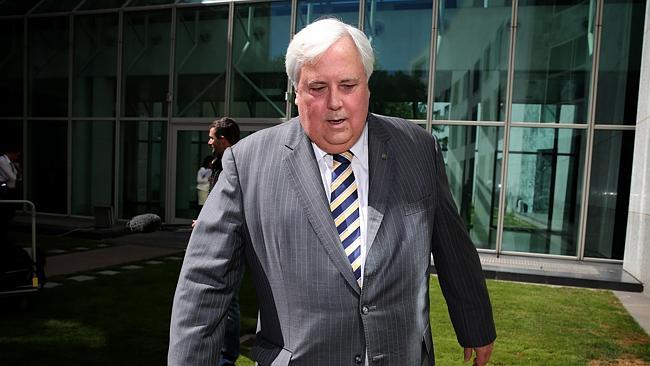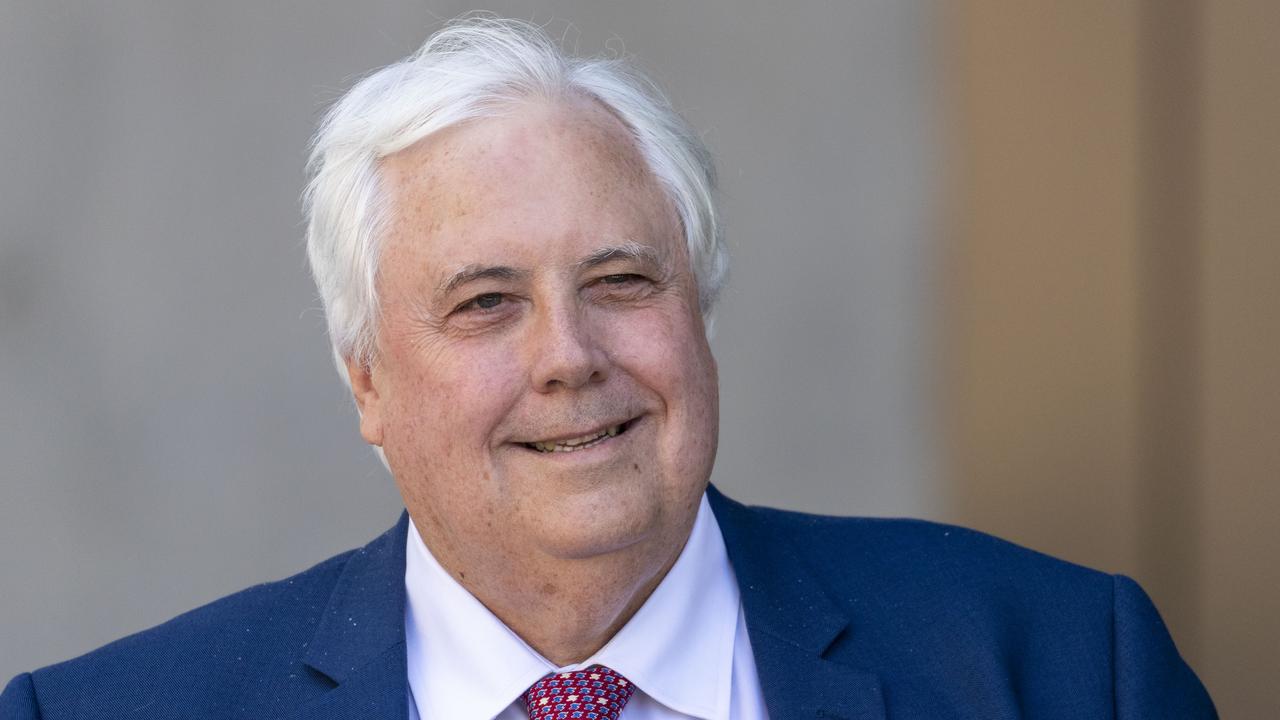Clive Palmer’s Yabulu refinery ‘a Reef risk’, says report
CLIVE Palmer’s Queensland nickel refinery poses a serious environmental threat, according to a high-level federal government report.

CLIVE Palmer’s Queensland nickel refinery poses a serious environmental threat, with nitrogen concentrations in its ponds more than 150 times the maximum for sewage discharge in the Great Barrier Reef Marine Park, according to a high-level federal government report.
The threat of another major discharge from the ponds to the ecosystem of Halifax Bay in the World Heritage Area in northern Queensland has been described in internal documents as “similar to the daily discharge of treated sewage from a city of seven million people”.
Documents provided under Freedom of Information laws disclose a lax approach by the federal and state governments despite repeated breaches by the refinery and unpermitted discharges of hundreds of tonnes of contaminants at very high levels of concentration.
The documents reveal that 18 months ago, Mr Palmer’s refinery “threatened a compensation claim of $6.4 billion should the Great Barrier Reef Marine Park Authority intend to exert authority over the company’s operations”.
The documents, including ministerial briefing notes and warnings about the impact of the toxic sludge, were produced by the federal government-run bureaucracy and released to the North Queensland Conservation Council after it filed an FOI request.
The loss-making refinery, which Mr Palmer took over from BHP Billiton in 2009, is seeking to block the release of many other documents identified in the FOI request. The matter is under review by the Office of the Information Commissioner.
Mr Palmer has previously warned in media interviews that if he cannot discharge the toxic sludge, “there’s an 8 per cent risk the ponds will collapse and cancer-causing tailings will spill into Townsville waterways. If we close it down and leave the dams there, they’re going to burst and children are going to die.”
Mr Palmer did not respond to a message and questions from The Australian yesterday. Two executives from the nickel refinery, Clive Mensink and Ian Ferguson, did not return calls. The refinery has been losing tens of millions of dollars, according to its financial reports.
In one of the new documents, Andrew Skeat, the general manager of the Marine Park Authority, conceded that it had never prosecuted Queensland Nickel for its unpermitted discharges of wastewater into the marine park. Mr Skeat refused to comment yesterday.
His report states: “Queensland Nickel has a history of poor water management and has not implemented its own management plans to prevent high tailings pond levels. The Queensland government has been ineffective in proactively regulating or enforcing the refinery’s water management plans.”
Mr Skeat’s report states that 5000 million litres of “hazardous waste” in the refinery’s tailings pond was equivalent to 2000 Olympic-sized swimming pools, and the nitrogen concentration “is more than 150 times the maximum concentration for sewage discharge allowed in the Marine Park”. The report states that since 2012 the authority “has been working collaboratively with Queensland Nickel and the Queensland government to reduce the risk”, adding “there remains a high risk of an unpermitted discharge into the Marine Park either directly through the ocean pipe or indirectly via coastal wetlands which flow to the World Heritage Area”.
Queensland Premier Campbell Newman’s government late last year approved new arrangements for the refinery that a marine scientist says allows the release of ammonia at concentrations more than 50 times the recommended concentrations.
The FOI documents show that one of the refinery’s discharges equated to about 20 per cent of the total nitrogen load released from the Burdekin catchment each year. This single discharge was more than twice the reported gains achieved under the authority’s Reef Rescue and Reef Plan programs, which cost millions of dollars. A federal Department of Environment-GBRMPA internal report states that since 2012, the refinery had wanted to discharge wastewater “continuously for at least three months, and the wastewater is understood to have nitrogen levels of at least 100 times the allowed maximum level as well as heavy metals and other contaminants”.
The report states: “The tailings dams contain heavy metals (nickel and cobalt) and very alkaline water — ammonia. The main risks to the ecosystem are the loading of the near-shore waters with nitrogen. If the pipe was used now to lower the levels in the dams the discharge would be similar to the daily discharge of treated sewage from a city of seven million people.”
The lack of a heavy North Queensland wet season has given the refinery a reprieve in the past two years, but Mr Newman has repeatedly called on Mr Palmer to upgrade the ponds to limit the risk of a spill in the event of a major downpour or cyclone.
Under new criteria issued by the Queensland government late last year, the refinery has been given a mechanism to bypass the federal regulatory agency and significantly exceed water quality guideline triggers, a marine scientist told The Australian yesterday.
The refinery’s nickel and cobalt processing produces hundreds of tonnes of waste with high levels of ammonia and other metals, which have been discharged into the world heritage area via an ocean disposal pipeline in 2009, 2011 and 2012.
In June 2012, Mr Palmer said: “These are potential threats to human life. If we don’t do something between now and the wet season, we are heading for disaster.”
The threat of a massive rain dump from Cyclone Dylan a fortnight ago prompted Mr Newman to castigate Mr Palmer for not upgrading the refinery’s ponds.



